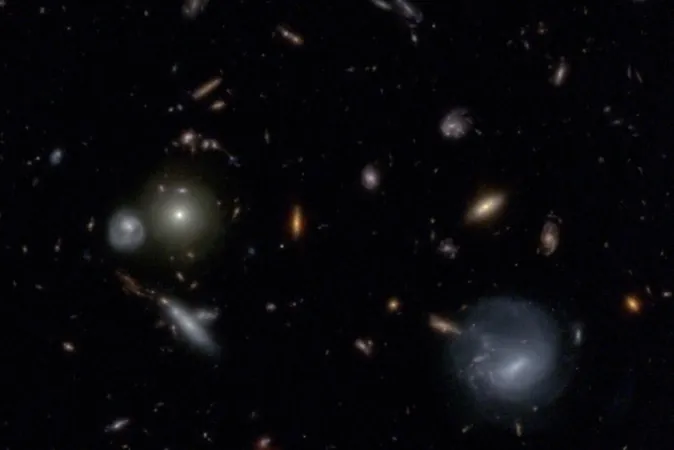
Irish Astronomers Unveil Stunning Discovery of New Planet WISPIT 2b!
2025-08-26
Author: Arjun
A Celestial Marvel: Meet WISPIT 2b!
A collective gasp echoed across the astronomy community as Irish astronomers announced the astonishing discovery of a new planet—WISPIT 2b! This remarkable gas giant, comparable in size to Jupiter, is just five million years old and offers a tantalizing glimpse into the early stages of planetary formation.
A Galactic Team Effort!
This groundbreaking find was made possible by an international alliance of researchers, proudly co-led by experts from the University of Galway. Positioned around a young star reminiscent of our own Sun, WISPIT 2b was detected using one of Earth's most state-of-the-art observatories, the European Southern Observatory’s Very Large Telescope (ESO’s VLT) in the pristine Atacama Desert.
A Stunning Discovery Method!
Dr. Christian Ginski, a lecturer at the University of Galway and key contributor to the study, shared the innovative method used: 'We captured short snapshot observations of numerous youthful stars to identify any little dots of light—signs of planets. However, we were instead met with a breathtaking, multi-ringed dust disk!'
A Daring Follow-Up!
Intrigued by this unexpected disk, the team quickly arranged follow-up observations to uncover the potential hidden treasure within. This marks only the second confirmed planet detected in such an early evolutionary phase, a coveted moment for astronomers that had only occurred once before in 2018.
Peering into the Depths of Space!
Captured in near-infrared light, WISPIT 2b still radiates warmth from its forming atmosphere. The researchers managed to secure a stunning image of the young proto-planet nestled within a distinct gap in its cosmic cradle, a dust-and-gas-rich disk that provides the building blocks for planetary formation.
Celebration of Young Talent!
Led by early-career PhD student Richelle van Capelleveen from Leiden University and a talented team from Galway, this discovery is a significant milestone in their careers. Van Capelleveen described the experience as 'amazing' and 'incredibly lucky', expressing her enthusiasm for what the discovery could mean for understanding planet formation.
Bridging Science and Passion!
Chloe Lawlor, a PhD student specializing in astrophysics, echoed similar sentiments, calling WISPIT 2b a 'beautiful example' for exploring current planet formation models. Meanwhile, fellow students like Jake Byrne and Dan McLachlan expressed their awe at what this discovery could mean, not only for themselves but for the scientific community at large.
The Future of Cosmic Discovery!
So, what does the future hold for WISPIT 2b? With a radius of approximately 380 astronomical units—about 380 times the distance from Earth to the Sun—its massive disk brims with potential for discovery, driving excitement and discussion among researchers worldwide. As this celestial saga unfolds, WISPIT 2b promises not only to redefine our understanding of planetary formation but also to ignite the imaginations of budding scientists everywhere!



 Brasil (PT)
Brasil (PT)
 Canada (EN)
Canada (EN)
 Chile (ES)
Chile (ES)
 Česko (CS)
Česko (CS)
 대한민국 (KO)
대한민국 (KO)
 España (ES)
España (ES)
 France (FR)
France (FR)
 Hong Kong (EN)
Hong Kong (EN)
 Italia (IT)
Italia (IT)
 日本 (JA)
日本 (JA)
 Magyarország (HU)
Magyarország (HU)
 Norge (NO)
Norge (NO)
 Polska (PL)
Polska (PL)
 Schweiz (DE)
Schweiz (DE)
 Singapore (EN)
Singapore (EN)
 Sverige (SV)
Sverige (SV)
 Suomi (FI)
Suomi (FI)
 Türkiye (TR)
Türkiye (TR)
 الإمارات العربية المتحدة (AR)
الإمارات العربية المتحدة (AR)